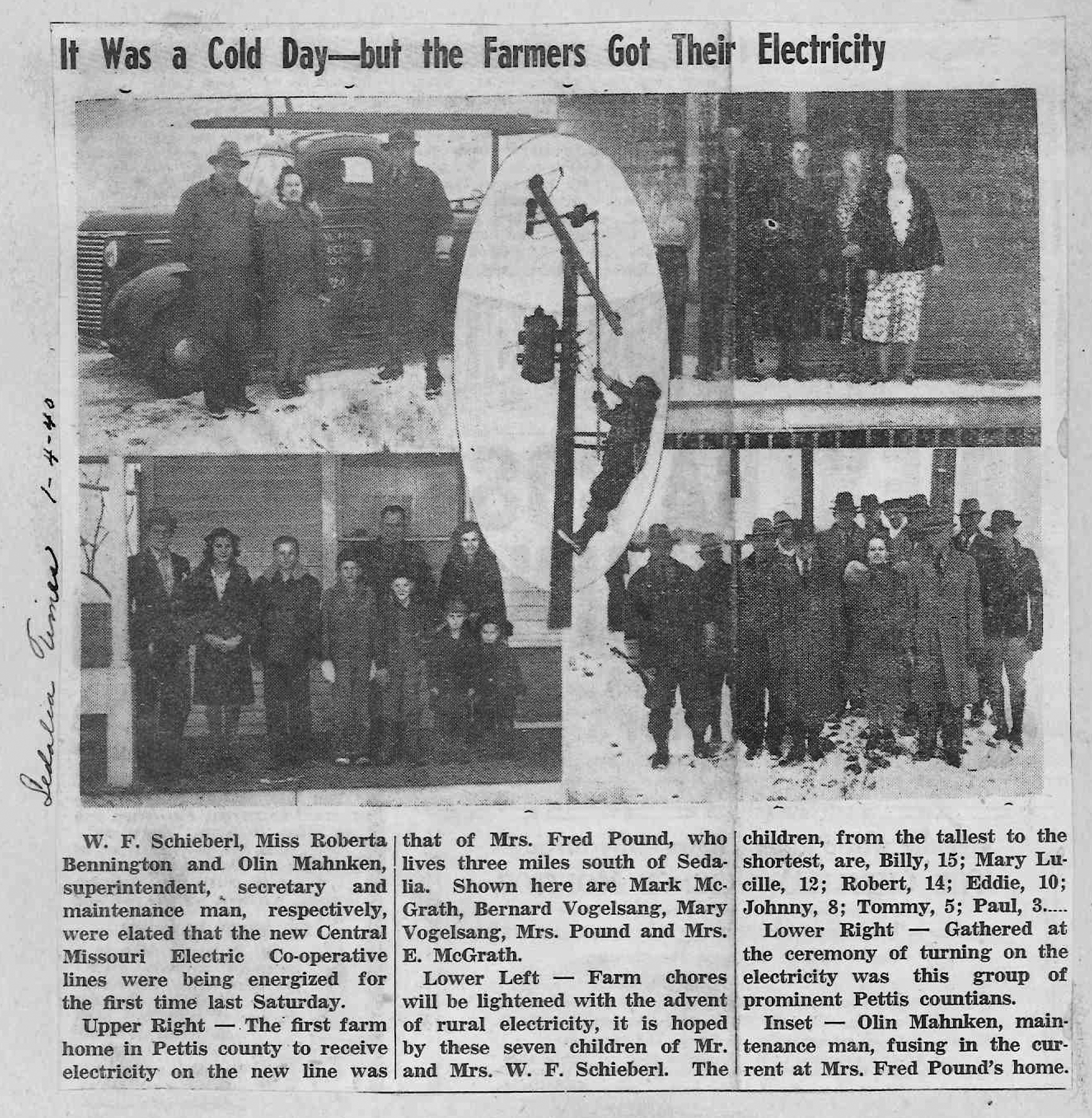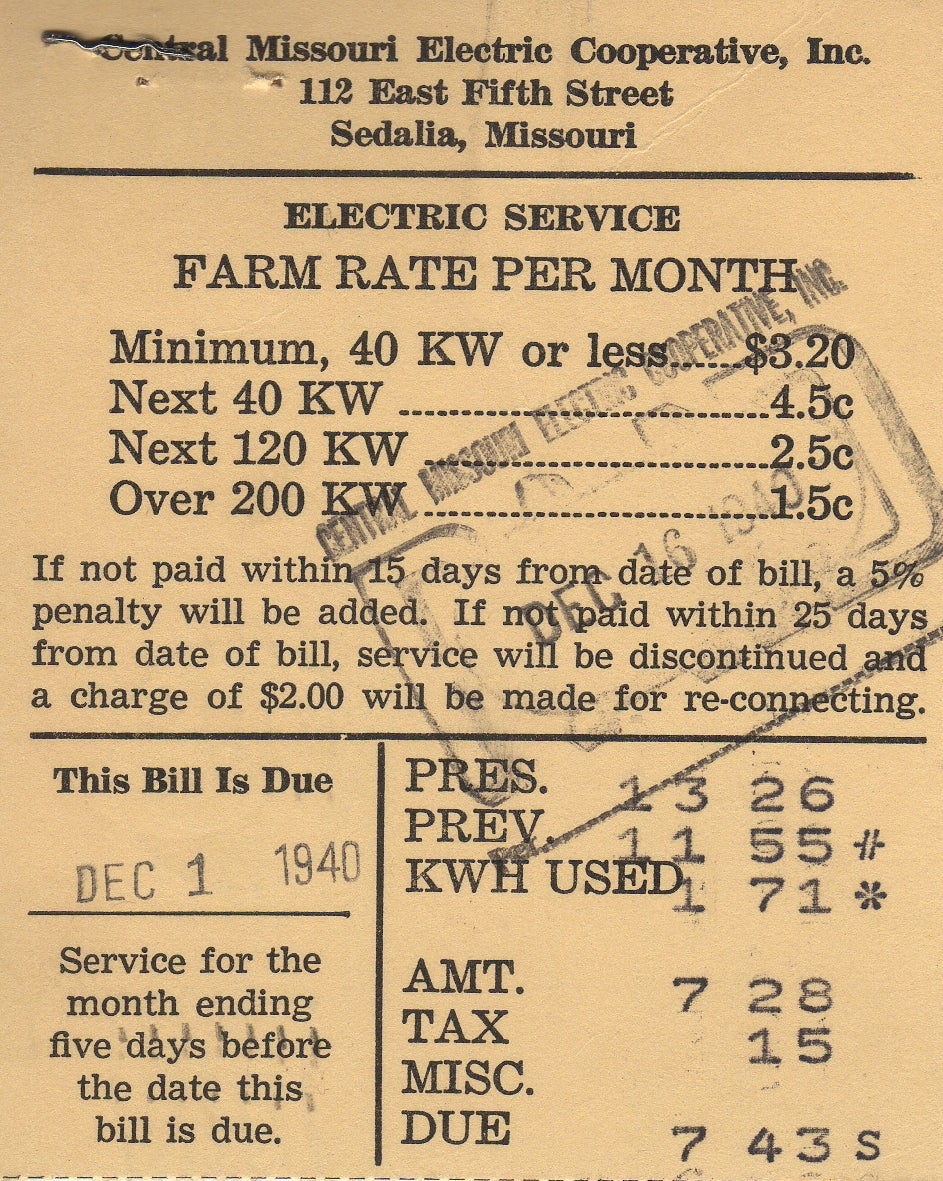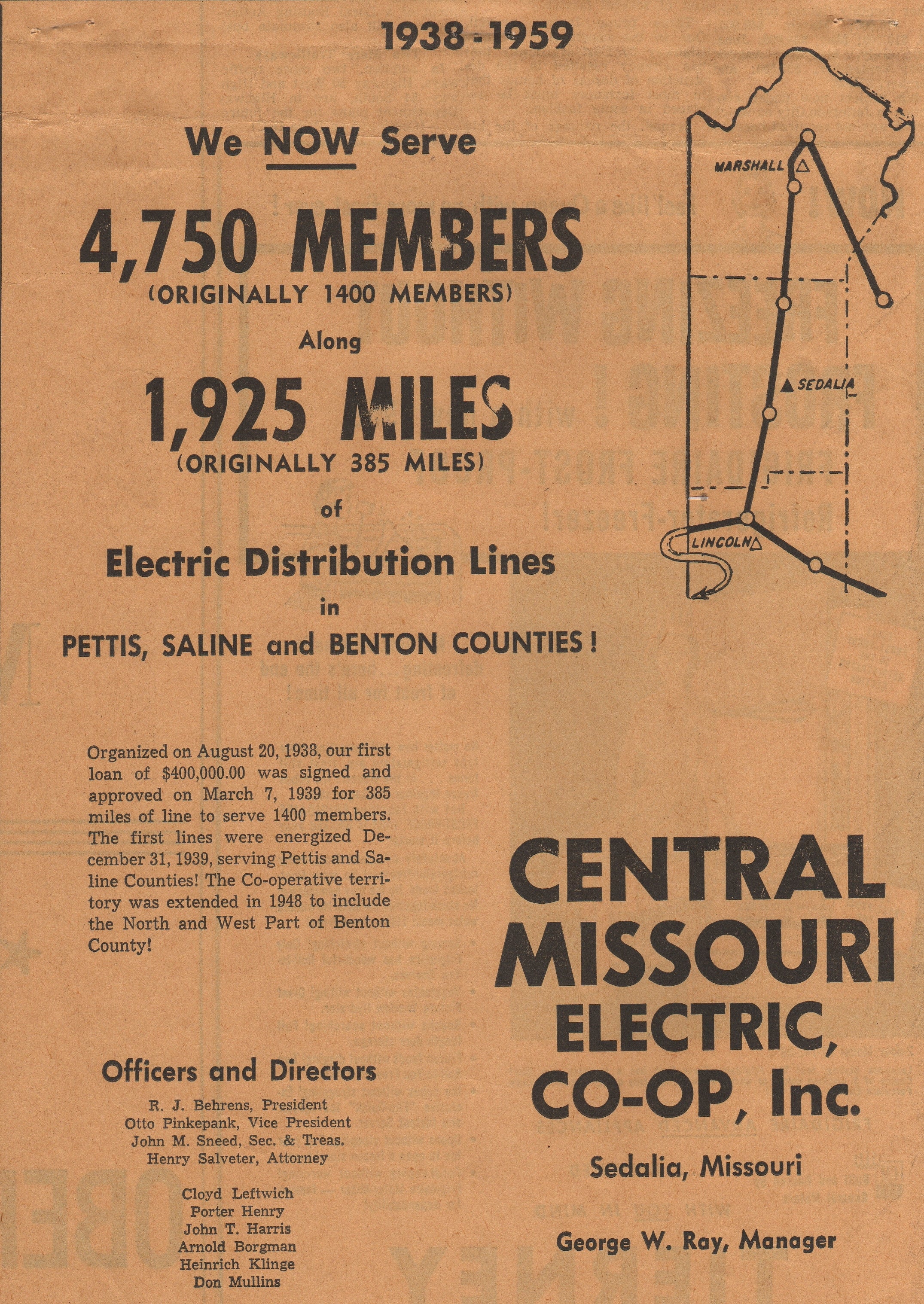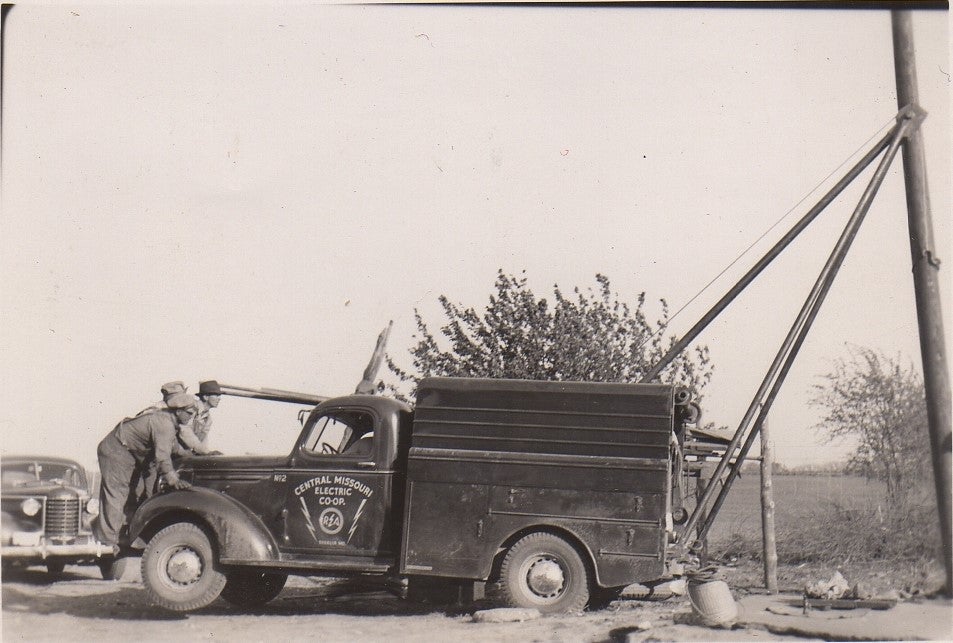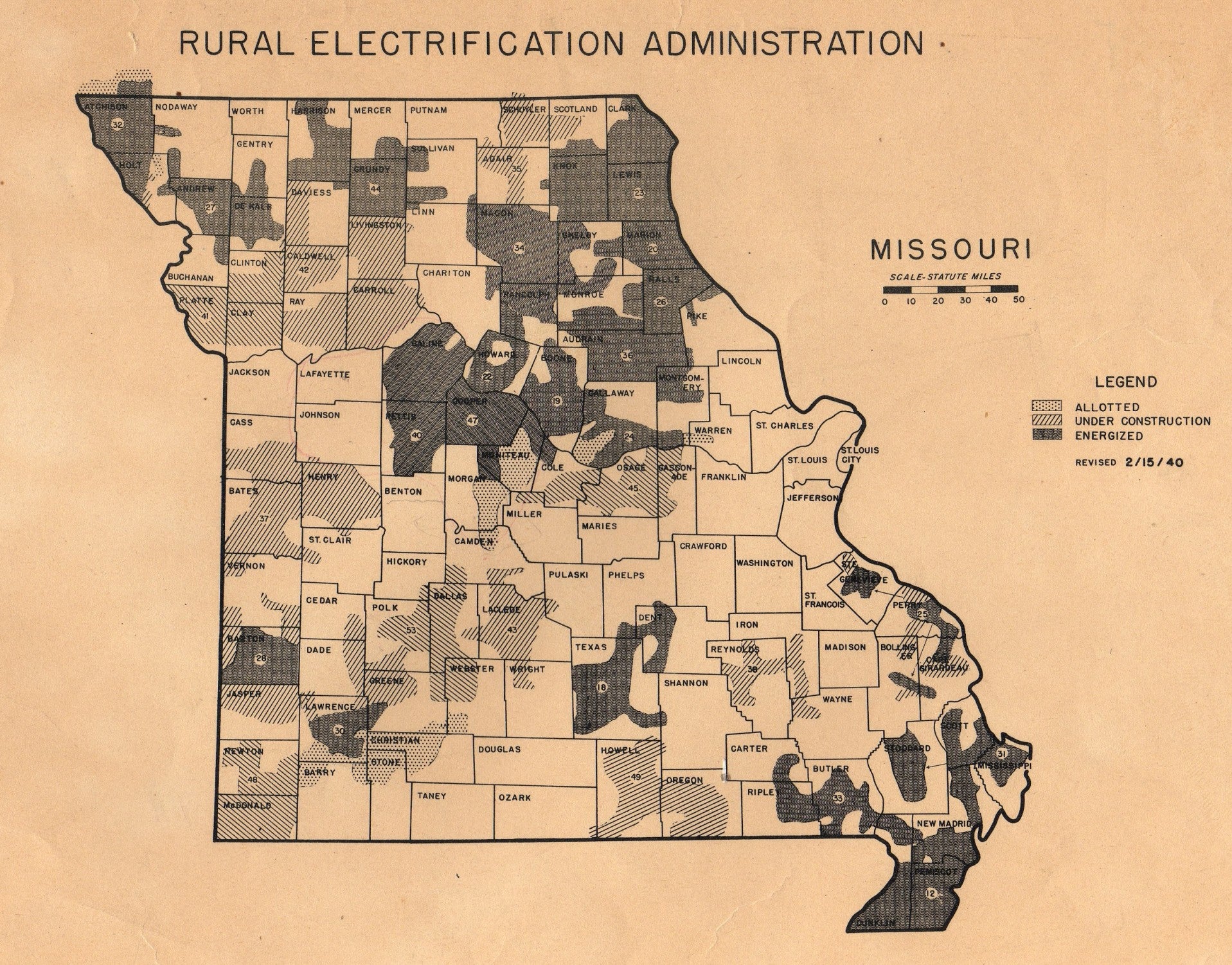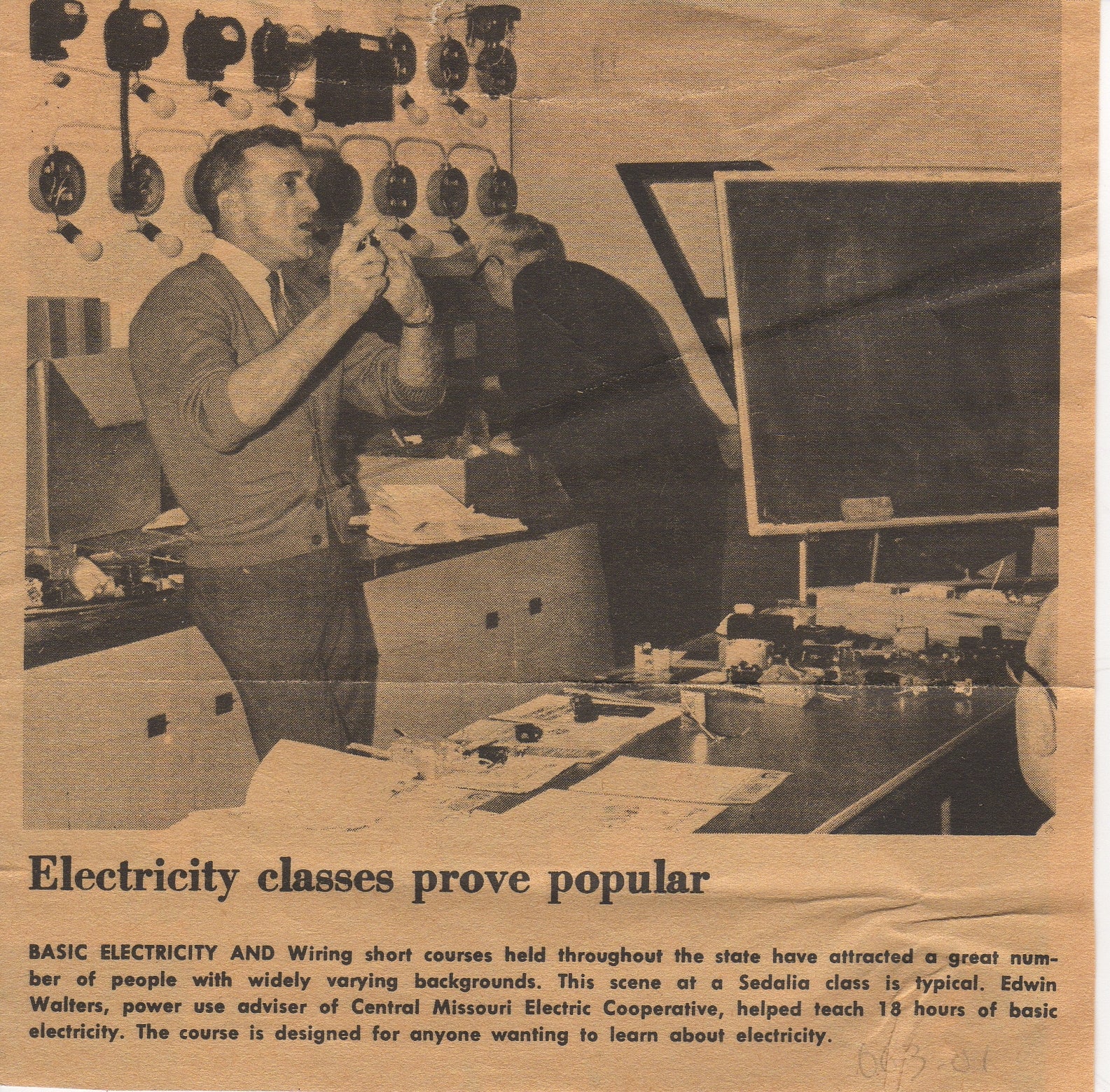During the 1920’s and 1930’s, different private utilities were building lines into small towns and villages, and gave very little thought to making service available to farmers. It was the policy of the utilities to “skim the cream,” and build only in rural areas where there was enough density to insure a “profit” from the enterprise.
The advent of the Rural Electrification Administration changed the picture. While it operates on sound business principles, service on a cooperative basis, and not profits, is the underlying philosophy. In 1936, Congress passed what is now known as “The Rural Electrification Act of 1936” and set up the Rural Electrification Administration now nationally known by the familiar emblem “REA.”
Local interest was first evidenced shortly after the REA law was passed. In spite of difficulties, county residents pushed forward.
Leaders in the first effort to secure Rural Electrification formed a committee producing a 1936 survey documenting 839 families interested in electric service in Saline and Pettis counties. Due to the drought of 1936, efforts were discontinued.
The second effort to secure an REA project was made in February 1938, but this effort was also unsuccessful until assistance was received from representatives of the REA in August of that year, when the final and successful effort to secure electricity was inaugurated.
On August 8, 1938, several residents from Saline and Pettis Counties met at the Oasis at Marshall Junction to discuss rural electrification. Central Missouri Electric Cooperative was incorporated just eight days later on August 20, 1938.
A resolution proposed at the Cooperative’s annual meeting February 14, 1939, authorized the board to borrow REA funds. The board of directors approved a $400,000 loan to build 385 miles of line complete with substations, transformers, meters, and all equipment needed to serve power to the rural areas of Saline and Pettis Counties.
741 Saline and Pettis county members had been connected to the Central Missouri Electric Cooperative grid through 385 miles of newly constructed line, by February 11, 1941. Not long after, northern Benton county members were added. By 1959, membership had grown to 4,750 served through 1,925 miles of line.
By 1950, Central Missouri Electric Cooperative and several other mid-Missouri cooperatives joined together to build a power plant and generate and transmit their own electricity. This cooperation resulted in the creation of a joint-owned transmission cooperative, Central Electric Power Cooperative (CEPC).
The ’50s and ’60s were years of growth and system improvement for all of the cooperatives in the state, and by the early 1960s power requirements had again exceeded capacity. In 1962, cooperatives in the state formed Associated Electric Cooperatives, Inc. (AECI). Its role was to plan, construct and operate the primary generation and transmission facilities needed by the state’s rural electric cooperatives.

